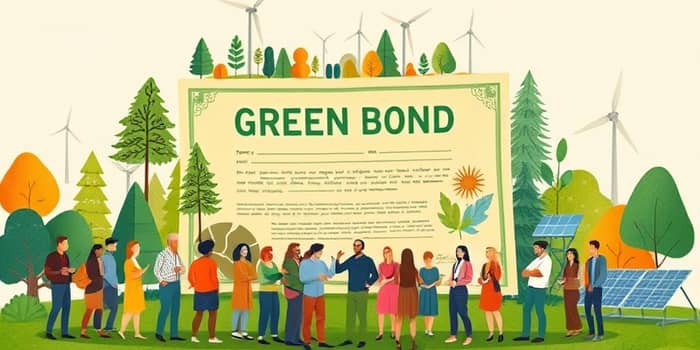
Investors today seek more than financial returns; they aspire to make a real-world difference. Values-aligned investing with green bonds offers a powerful avenue to merge economic goals with climate-conscious action. This article dives deep into the world of green bonds, highlighting their structure, benefits, guidelines, market growth, and practical considerations for those dedicated to sustainable finance.
Green bonds are unique debt securities designed to fund projects with clear, positive environmental outcomes. Unlike conventional bonds, their proceeds are exclusively allocated to sustainable initiatives. At their core, green bonds serve as fixed-income debt instruments specifically earmarked for renewable energy, energy efficiency, sustainable transport, and other initiatives that address climate change.
Key features include transparent reporting and accountability, ensuring that investors can track how their capital generates measurable benefits. With the growth of ethical investment philosophies, green bonds have become a cornerstone of environmentally responsible portfolios.
Green bonds come in various structures, each tailored to specific project needs and investor preferences. Understanding the nuances helps align risk and return expectations.
The green bond market has expanded rapidly, reflecting rising demand for sustainable investment vehicles. Institutional and retail investors alike are recognizing both the financial and environmental value these instruments deliver.
Strong regulatory support and growing environmental awareness are projected to drive the market to over US$1 trillion by 2032. This growth underscores a shift in capital allocation toward projects that can demonstrate positive environmental impacts and measurable outcomes.
To maintain integrity and prevent greenwashing, adherence to established frameworks is essential. In the absence of universal regulation, voluntary standards like the International Capital Market Association’s Green Bond Principles (GBP) have become benchmarks.
Engaging external reviewers or obtaining second-party opinions further enhances credibility. By committing to rigorous standards, issuers and investors can safeguard the market’s authenticity.
Green bonds fund a wide range of initiatives that address critical environmental challenges. Investors can directly support:
Beyond environmental gains, many green bond projects generate social co-benefits—improvements in public health, job creation, and community resilience. This dual impact makes them a compelling option for investors committed to holistic sustainability.
Green bonds attract a broad array of investors. Institutional players—pension funds, insurance companies, and asset managers—value the risk-return profile that mirrors conventional bonds but with added environmental oversight. Retail investors, increasingly socially conscious, allocate capital to green bonds to align portfolios with personal values.
Key motivations include:
Despite robust growth, certain obstacles persist. Investors must remain vigilant and informed.
By conducting thorough analysis and leveraging reputable frameworks, investors can navigate these challenges and safeguard their impact objectives.
The green bond landscape continues to evolve. Three prominent trends are:
These developments reflect a maturation of sustainable finance, where innovation and accountability go hand in hand.
Green bonds stand at the intersection of finance and environmental stewardship, offering a clear mechanism to channel capital toward climate solutions. By adhering to rigorous guidelines, tracking performance, and understanding market dynamics, investors can maximize both financial returns and ecological benefits. Embrace voluntary international guidelines such as GBP and join a global movement that transforms ambition into action, forging a greener, more resilient world for generations to come.
References













